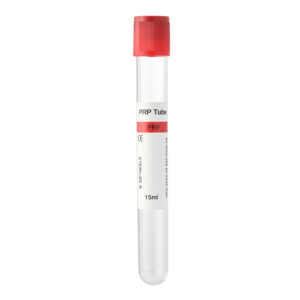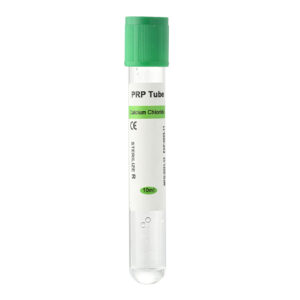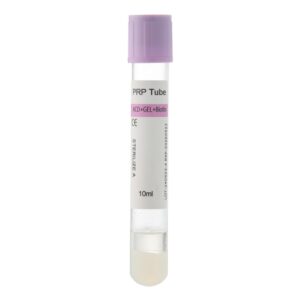In recent years, both dry needling and Platelet-Rich Plasma (PRP) therapy have gained popularity in the medical field, particularly in sports medicine, physical therapy, and pain management. These therapies have proven to be effective in treating muscle and joint issues. However, dry needling and PRP therapy differ in their mechanisms, treatment outcomes, and suitable applications. This article will explain these two therapies in detail, helping you understand which one might be more effective for your specific needs.
What Is Dry Needling?
Dry needling is a technique that uses fine needles to target muscle knots, soft tissues, or trigger points. The goal is to alleviate muscle tension, reduce pain, and improve blood circulation in the affected areas. Unlike traditional acupuncture, dry needling does not involve injecting any substances into the body. Instead, it relies on physical stimulation through the needle insertion to promote the body’s natural healing response.
During dry needling, the needle is inserted into muscle trigger points, which are areas of tightness or pain. By stimulating these points, dry needling helps reduce muscle spasms and inflammation, thus relieving discomfort and improving the range of motion.

What Is PRP Therapy?
Platelet-rich plasma (PRP) therapy is a treatment that uses a patient’s own blood to speed up tissue healing. PRP is created by drawing blood from the patient, processing it to concentrate platelets, and then injecting the enriched plasma back into the injured area. The concentrated platelets contain growth factors that stimulate tissue repair and regeneration.
PRP therapy is commonly used to treat chronic conditions such as tendon injuries, arthritis, and soft tissue damage. Since the therapy uses the patient’s blood, it is generally safe and carries a low risk of allergic reactions.
Comparing Dry Needling and PRP Therapy
Mechanism of Action
- Dry Needling: Dry needling works by inserting needles into specific areas of muscle tissue, such as trigger points, to relieve muscle tension and improve circulation. This physical stimulation promotes healing and reduces inflammation.
- PRP Therapy: PRP therapy uses the growth factors found in platelets to promote healing in the body’s tissues. By injecting PRP into damaged areas, it accelerates the body’s natural healing process, especially in tendons, joints, and soft tissues.
Applications
- Dry Needling: Dry needling is effective for treating muscle-related issues such as muscle spasms, neck pain, back pain, and sports injuries. It is particularly useful for patients with acute or subacute conditions that require fast pain relief and muscle relaxation.
- PRP Therapy: PRP therapy is best suited for treating chronic conditions and soft tissue injuries, including tendonitis, joint arthritis, and ligament damage. It is ideal for patients with long-term or recurring injuries that are slow to heal.
Effectiveness
- Dry Needling: Dry needling provides quick pain relief and muscle relaxation. Most patients feel improvement within a few hours or days after the treatment. However, it may not be as effective for chronic or deep-tissue injuries.
- PRP Therapy: PRP therapy tends to show gradual results. While patients may not experience immediate relief, PRP offers long-term benefits by accelerating tissue repair. It is particularly effective for chronic conditions or injuries that have not responded to other treatments.
Pain during Treatment
- Dry Needling: Some discomfort may be felt during dry needling, especially when the needle is inserted into a muscle trigger point. However, the pain is usually temporary and subsides soon after the session.
- PRP Therapy: PRP therapy involves an injection of concentrated plasma, which can cause pain or discomfort at the injection site. The level of pain varies depending on the treated area and the patient’s sensitivity.
Recovery Time
- Dry Needling: Recovery time is relatively short. Most patients can resume normal activities right after the treatment, although some mild soreness or swelling may occur in the treated area. These side effects usually resolve within a few days.
- PRP Therapy: PRP therapy requires a longer recovery time. Although it is minimally invasive, patients typically need several weeks to experience noticeable improvement. During recovery, it is important to avoid strenuous activities to allow the treated area to heal properly.
Which Is More Effective?
Both dry needling and PRP therapy have their unique benefits, and the choice between the two depends on the patient’s condition and goals.
- Dry Needling: If your condition involves acute muscle pain, spasms, or sports injuries, dry needling might be the best option. It provides quick relief and can help improve muscle flexibility and range of motion in a short amount of time.
- PRP Therapy: If you are dealing with chronic joint pain, tendon injuries, or long-lasting soft tissue damage, PRP therapy may be more effective. While it takes time to see results, PRP can provide a lasting solution by stimulating the body’s natural healing processes.
Conclusion
Healthcare providers consider both dry needling and PRP therapy highly effective treatments, each with its own set of advantages. Dry needling is best for quick pain relief and muscle relaxation, while PRP therapy is ideal for long-term tissue healing and recovery. To determine which treatment is right for you, consult with a healthcare professional who can assess your specific condition and recommend the most appropriate therapy.





